

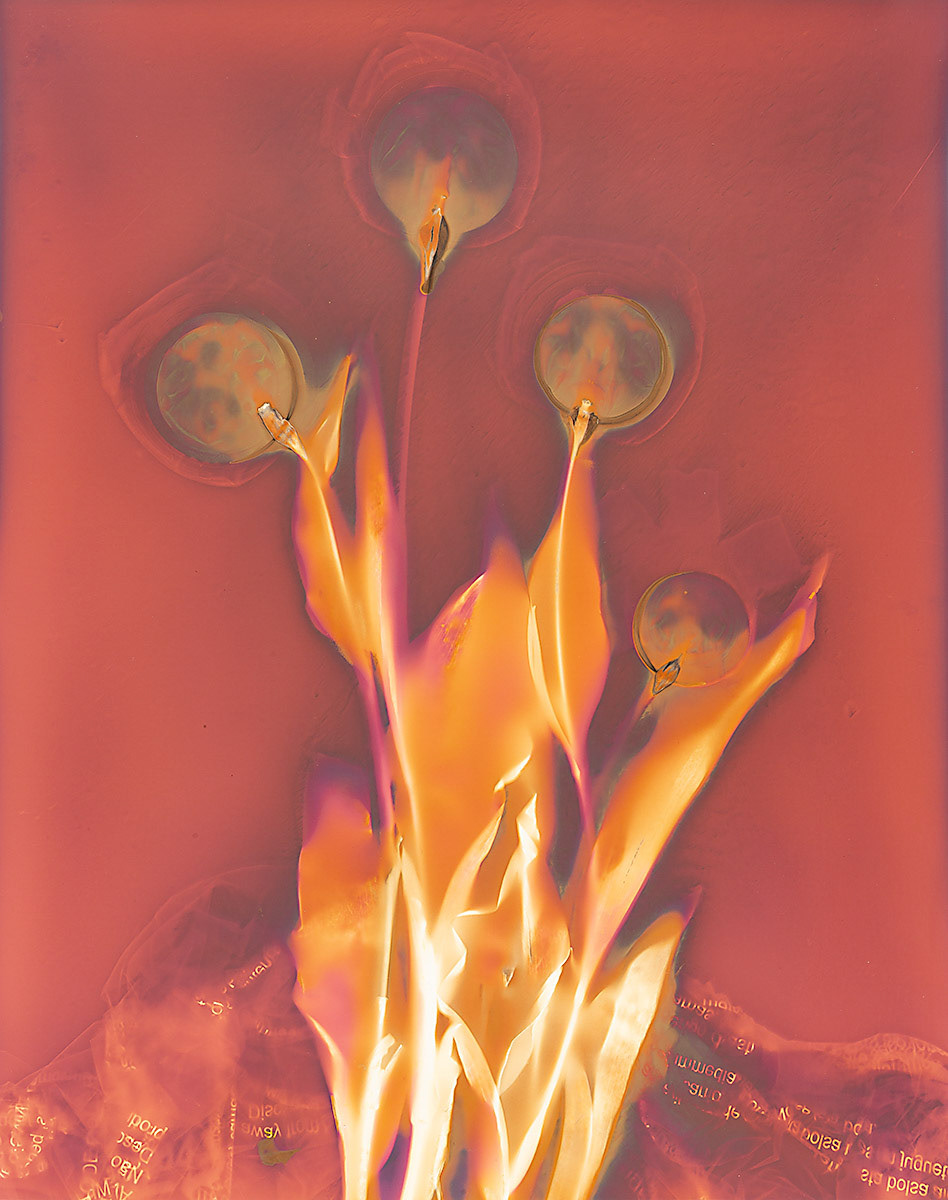
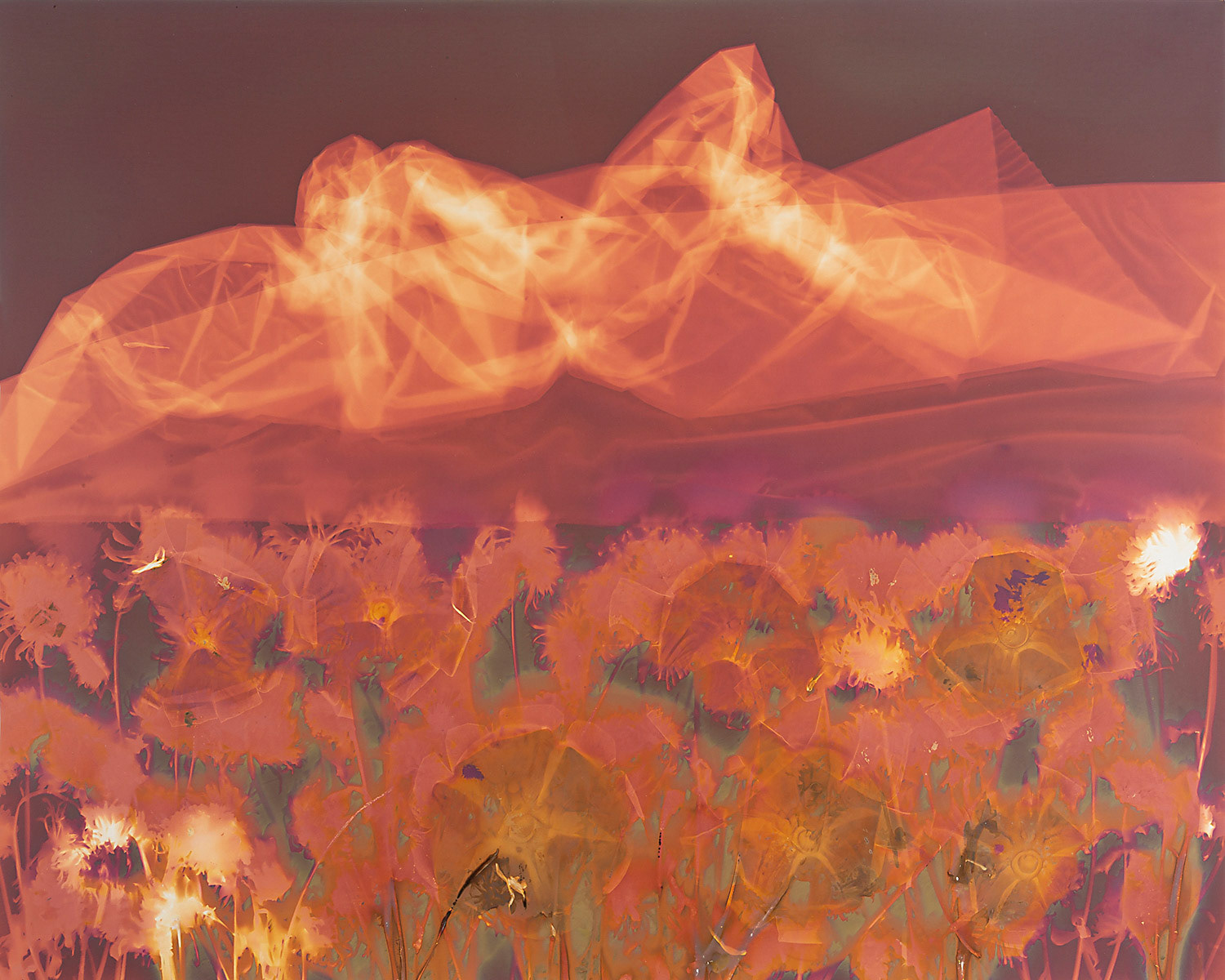
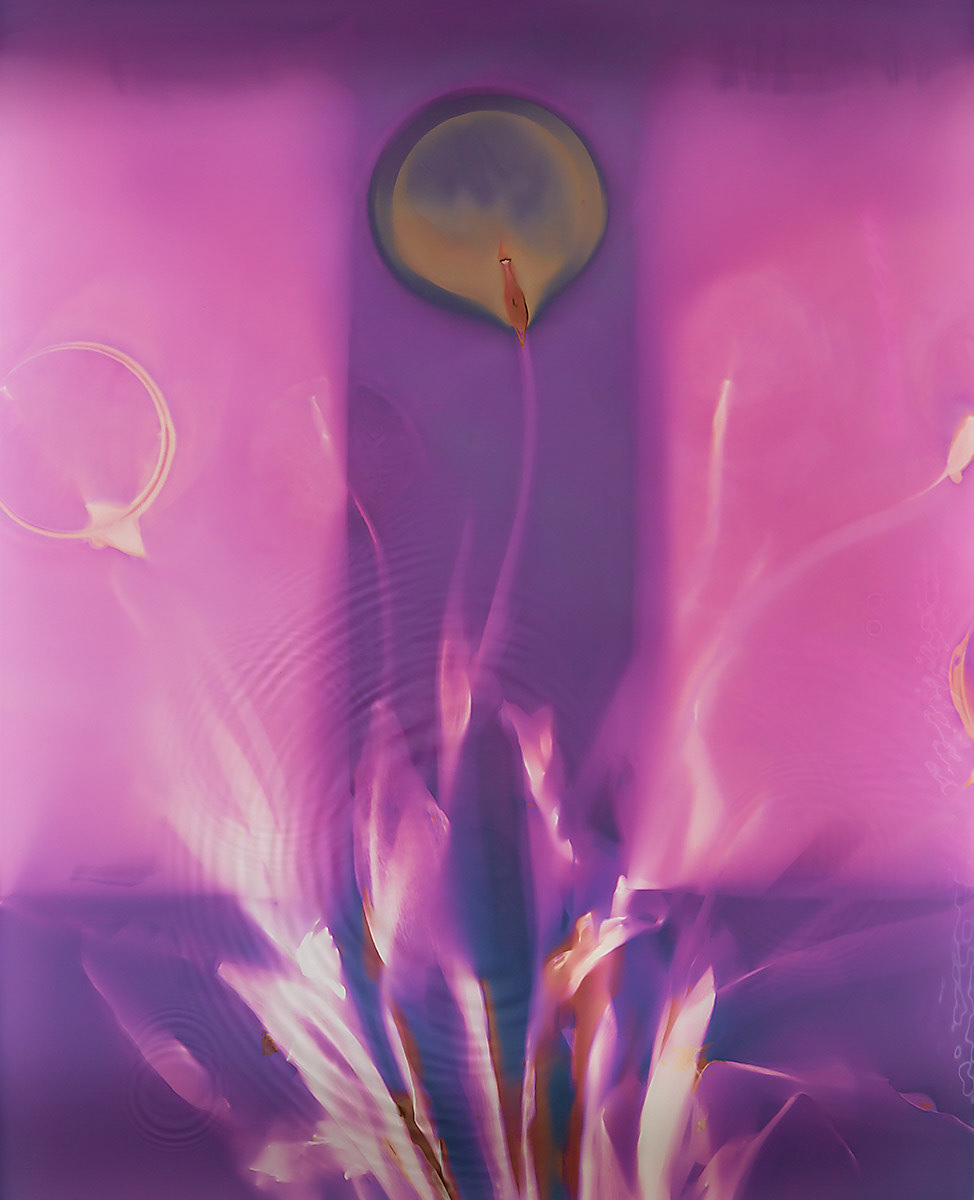



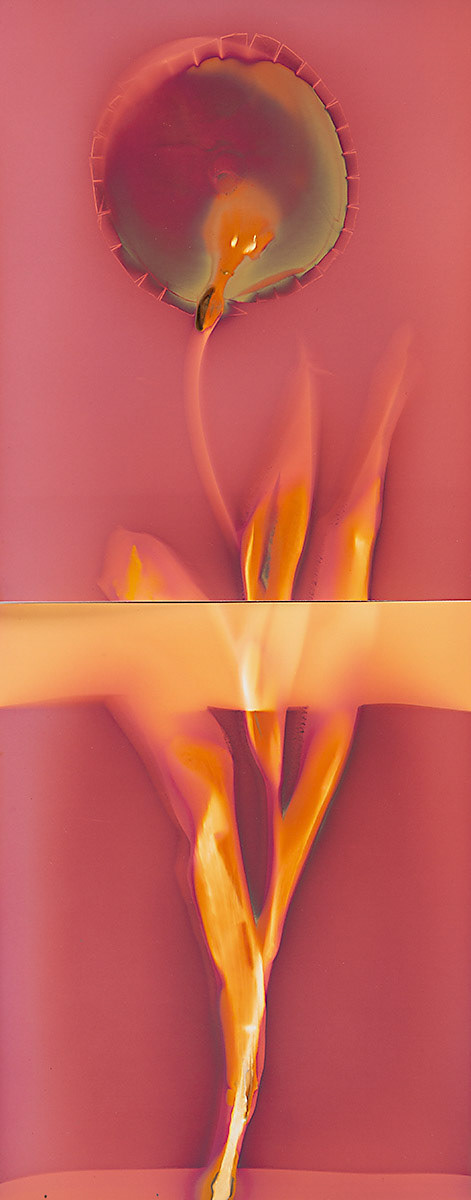
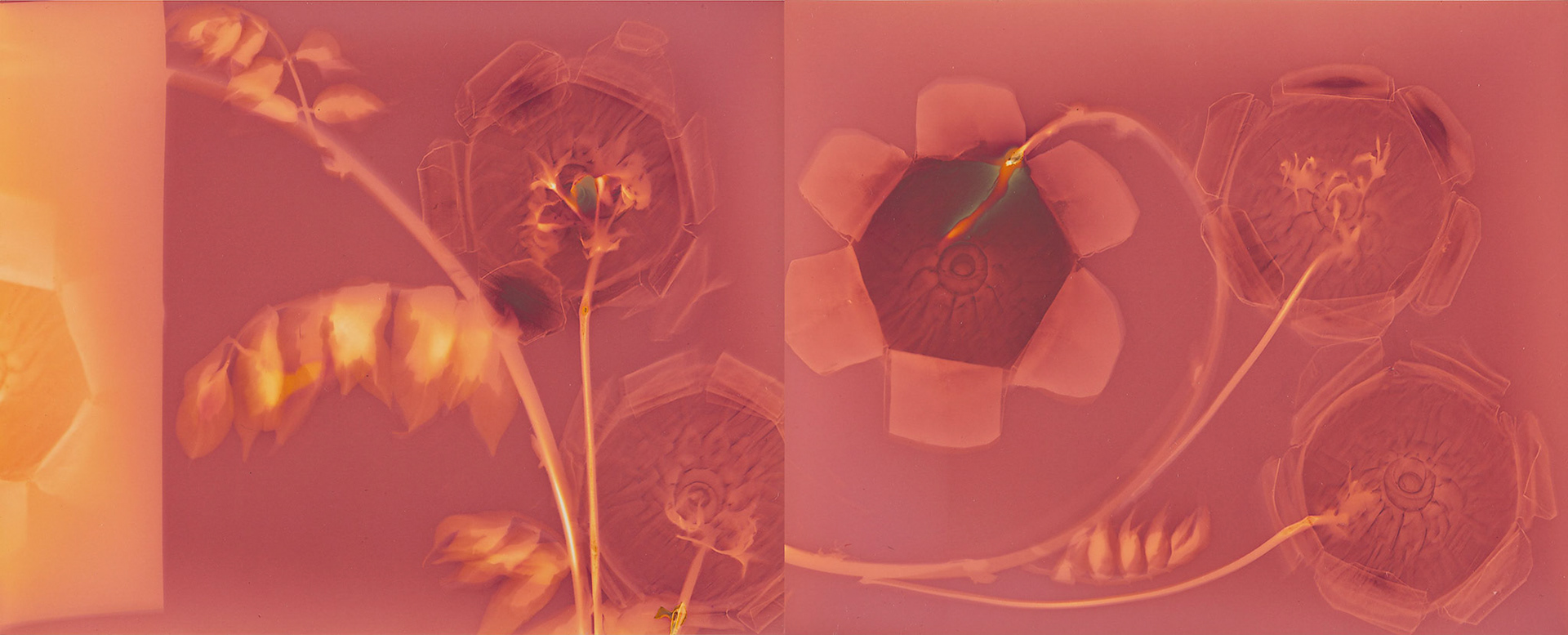
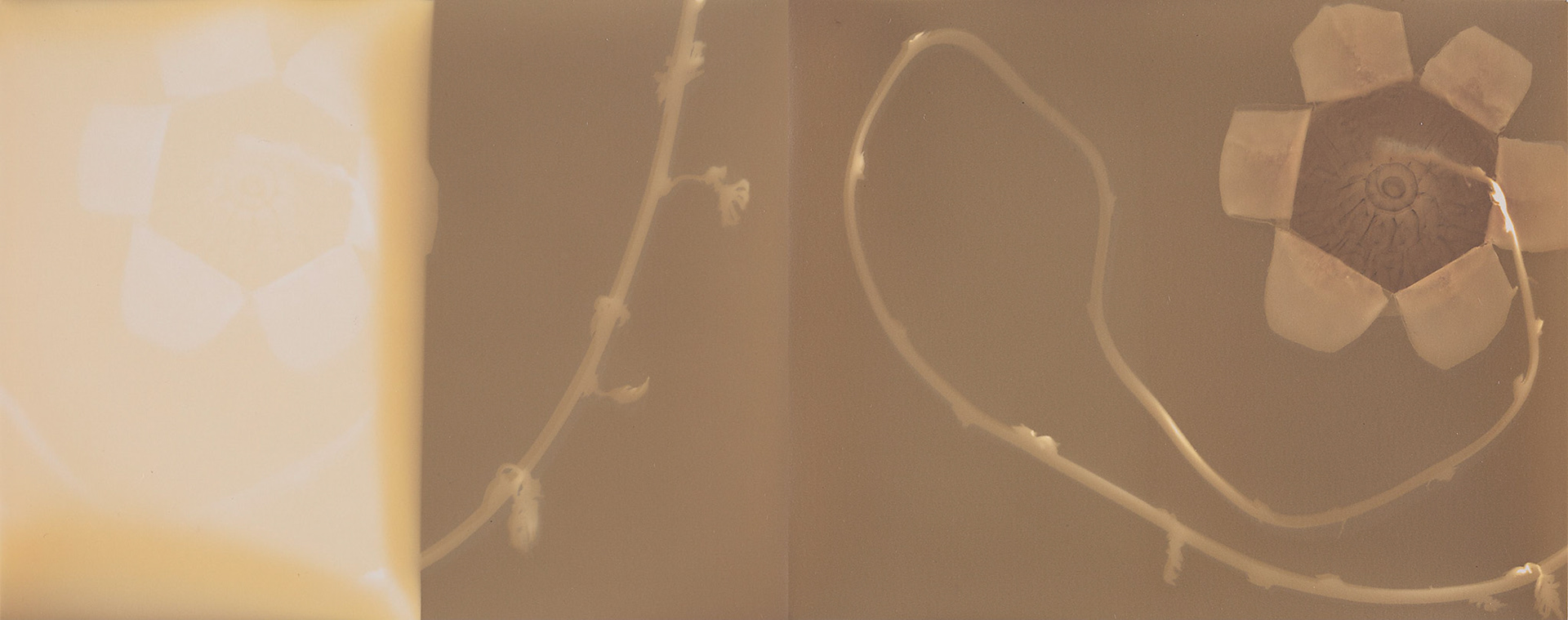



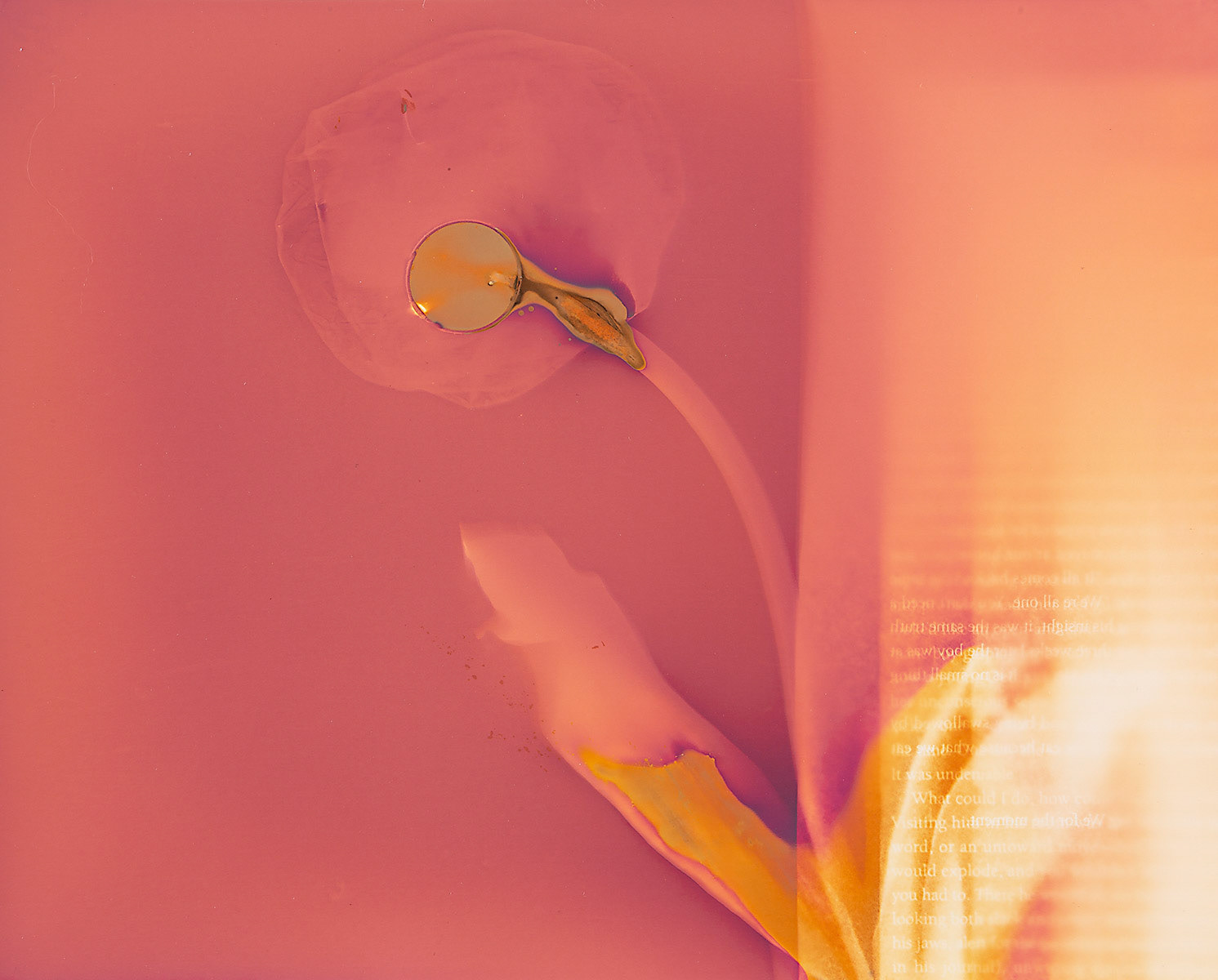


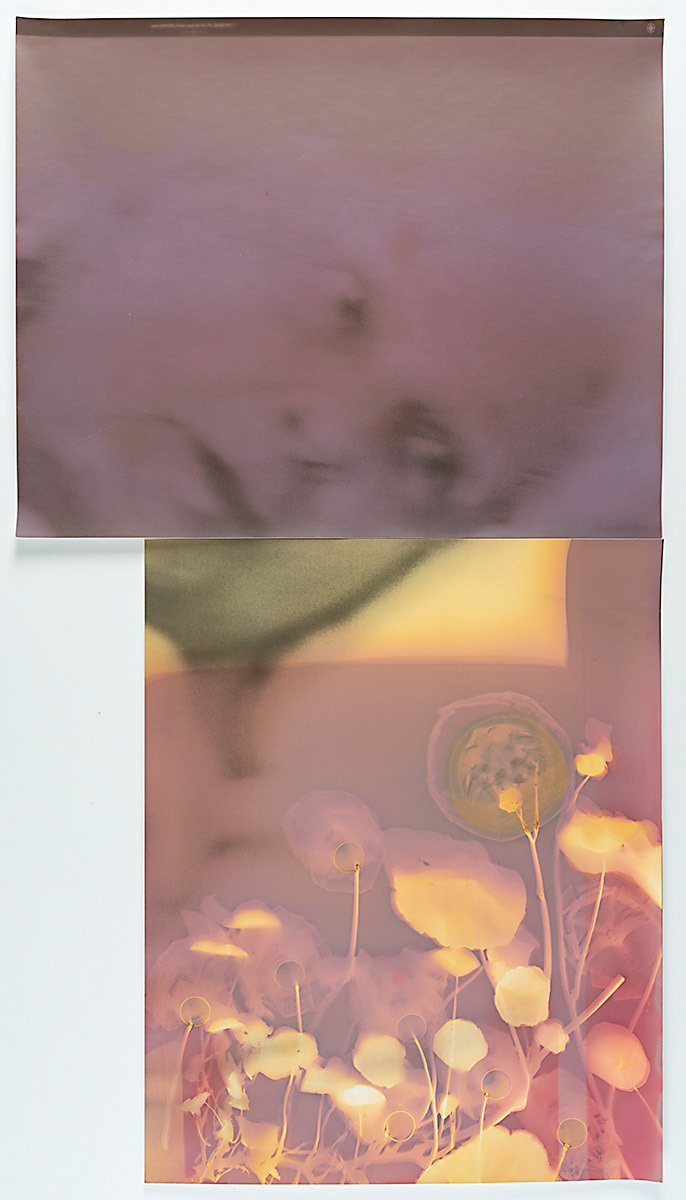
This body of work utilizes a camera-less photographic process rooted in the early days of photography. By arranging single-use plastic along with plant materials onto silver gelatin paper and exposing it to sunlight, I capture their shadows. The sun's intense rays imprint this print-out photogram onto the black & white darkroom paper, reconfiguring the nano-silver matrix and creates a specular interference of rays shining back to the viewer. Subsequently, I transfer the paper to the darkroom to preserve it archivally. The process creates structural color, similar to a butterfly wing or an oil spill.
Life on Earth hinges on the sun, but our actions stand as the primary catalyst for rising temperatures. A significant factor contributing to this issue is our obsession with plastic. In this series, I replace the plant's flower with a single-use plastic sports bottle. As sunlight passes through the bottle's base, creating an intriguing, flower-like shape. Yet, beneath this surface beauty lies a more unsettling truth.
Plastic derives from petroleum products, and the production of each plastic item releases greenhouse gases. These gases, in turn, trap the sun's rays, warming the Earth and causing harm to flora and fauna. This disruption affects our food supply, weather patterns, oceans, and more, ultimately leading to the emergence of a new geological epoch—the Anthropocene. Similarly, I am creating a new form of plant life, one forged from single-use plastic.
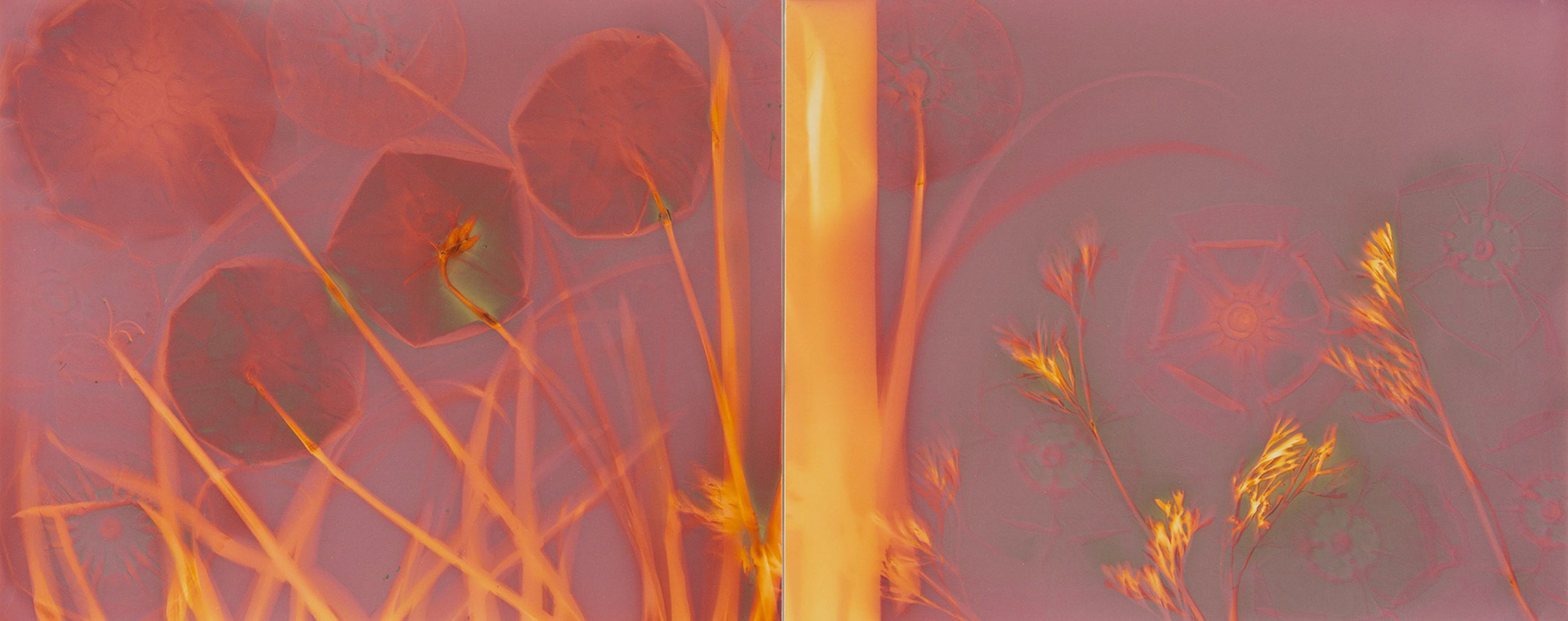
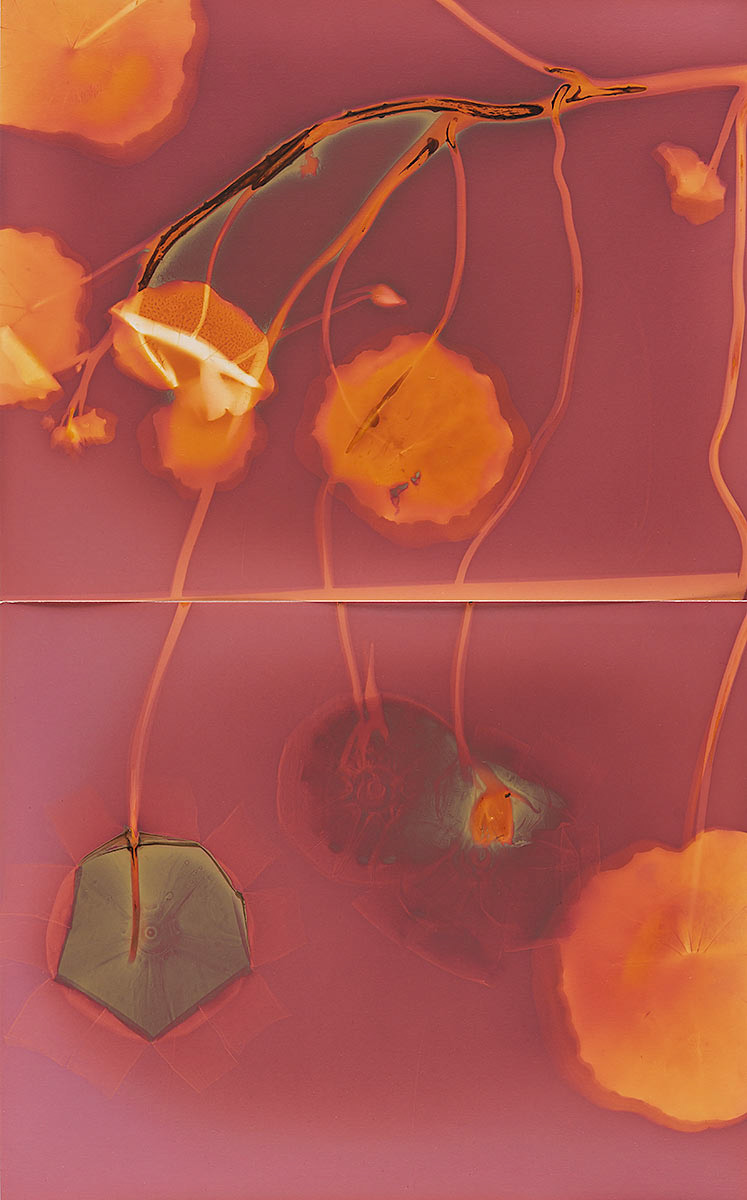
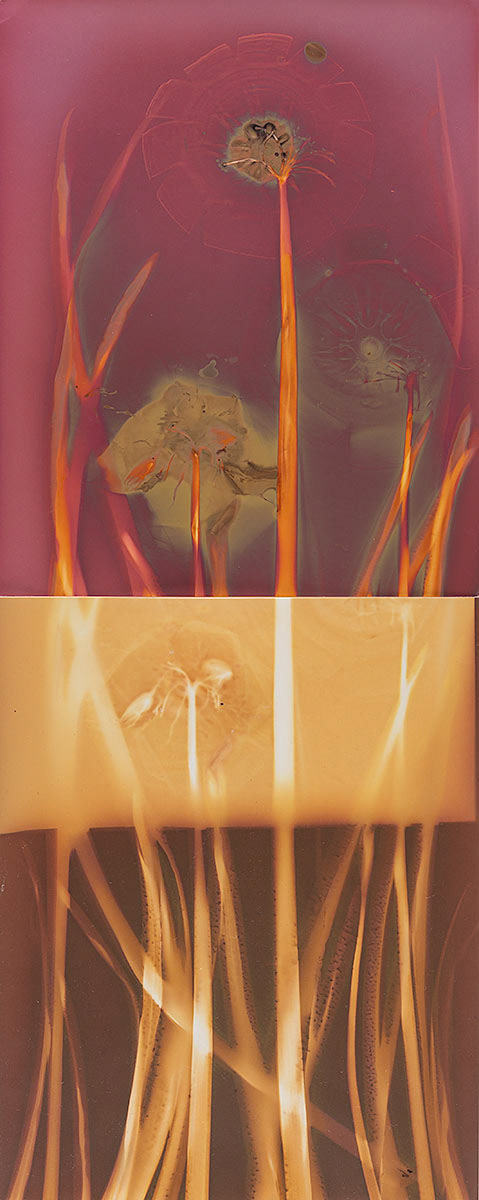
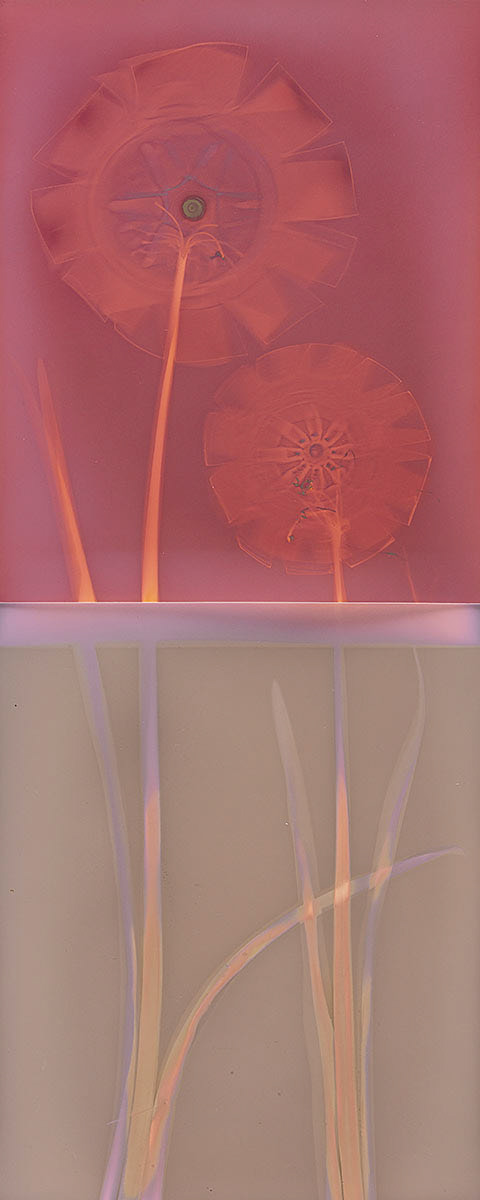
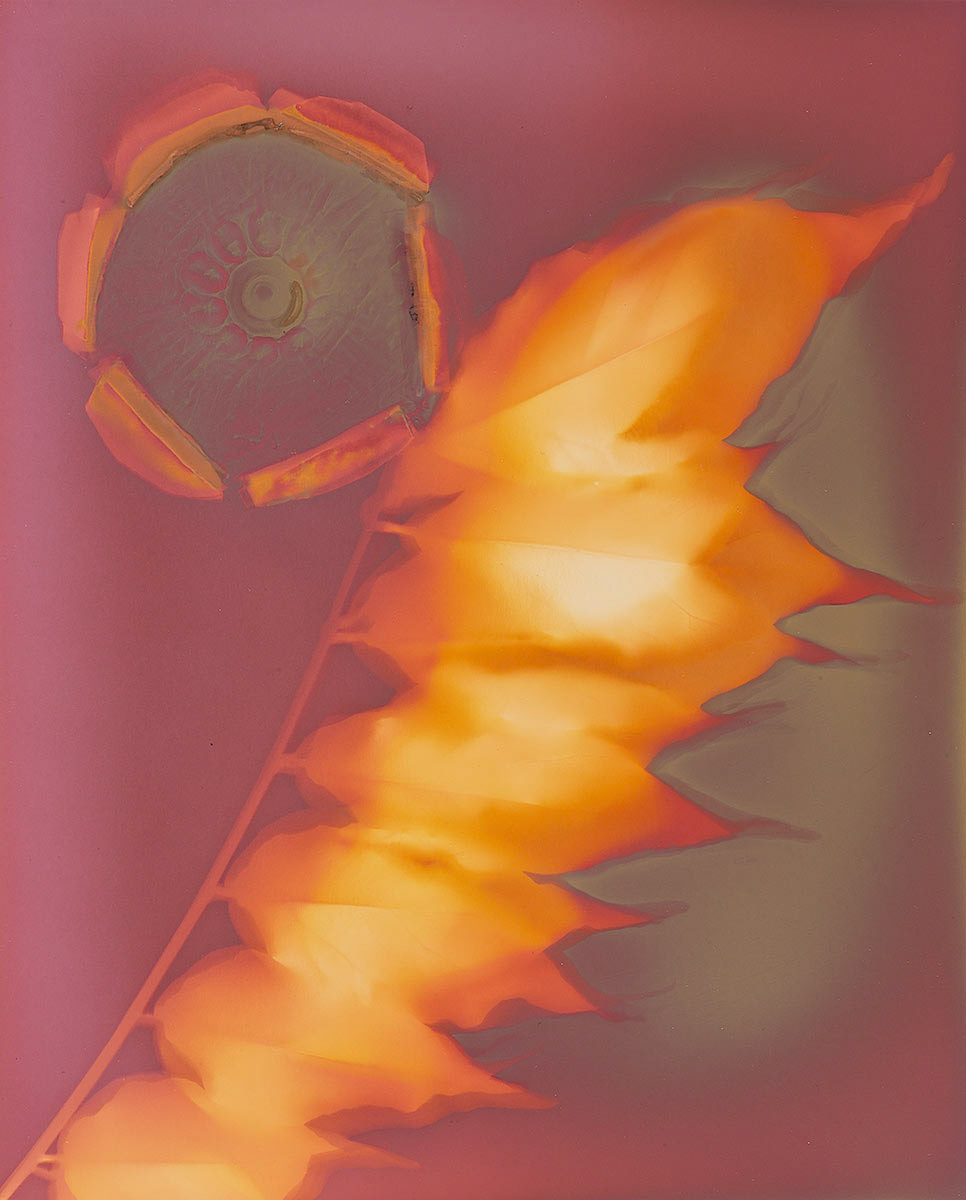
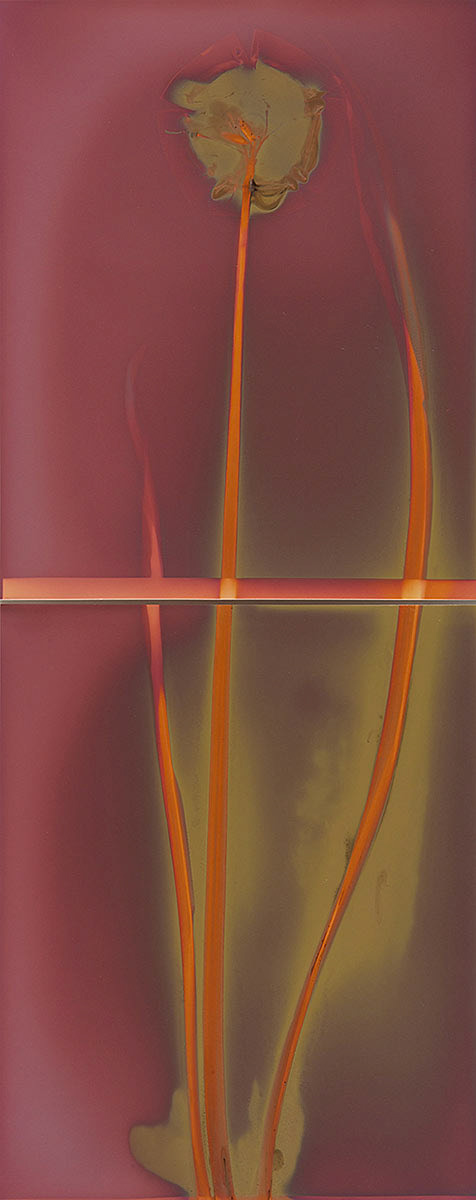
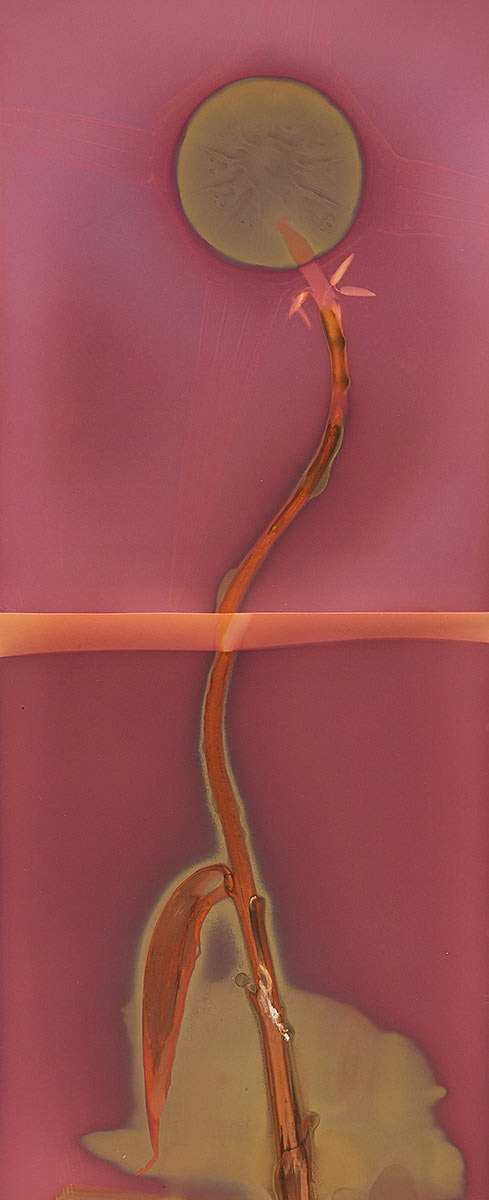
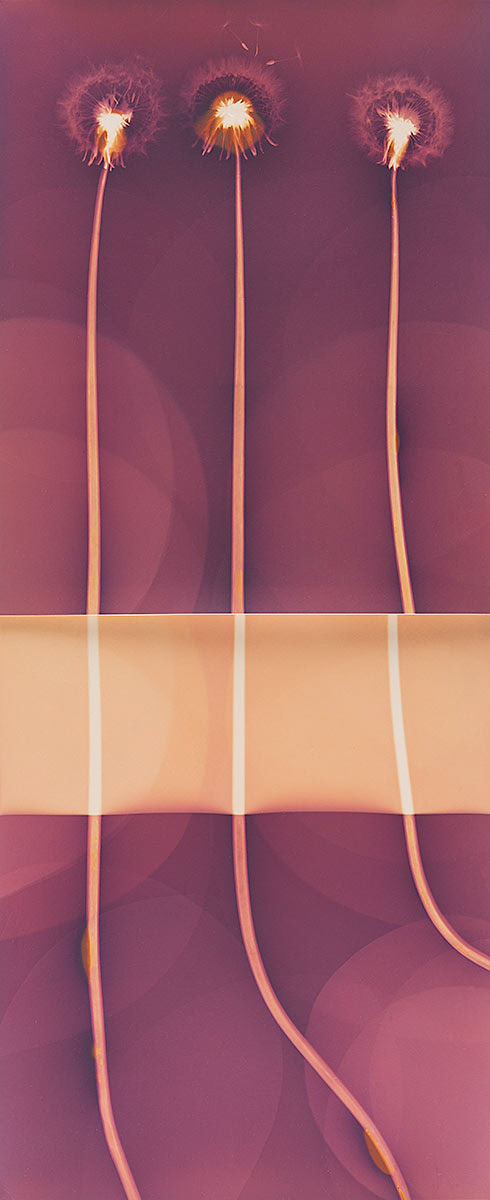

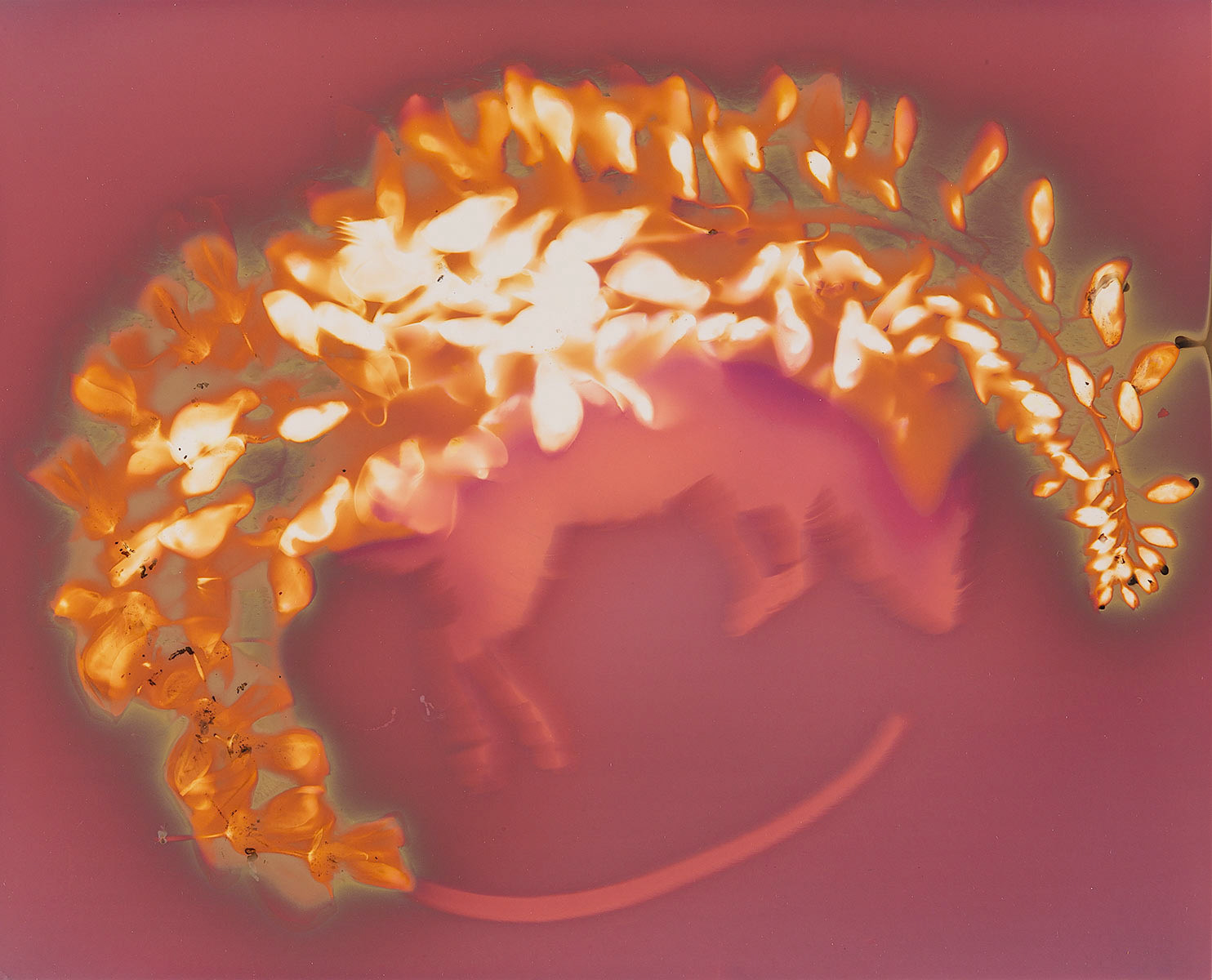
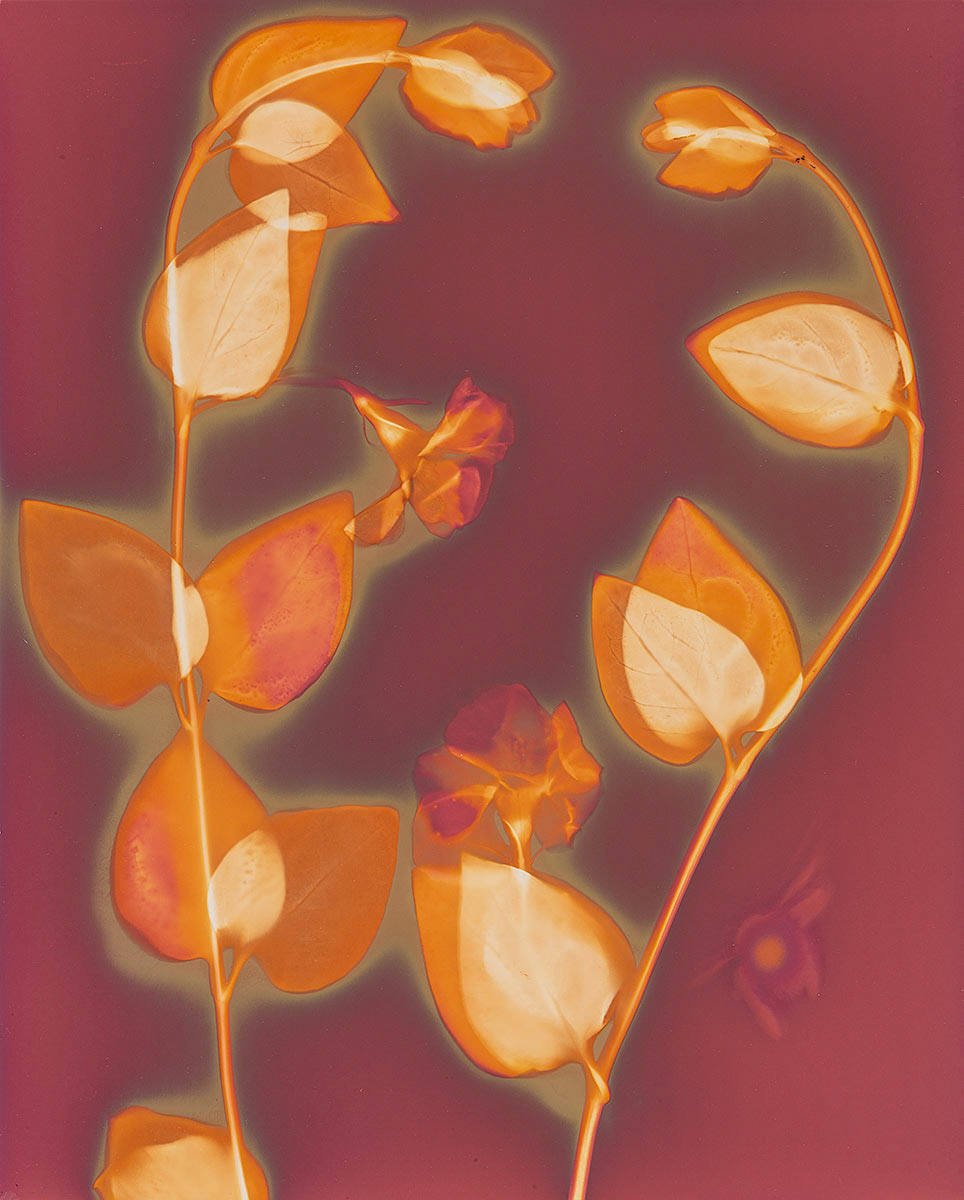

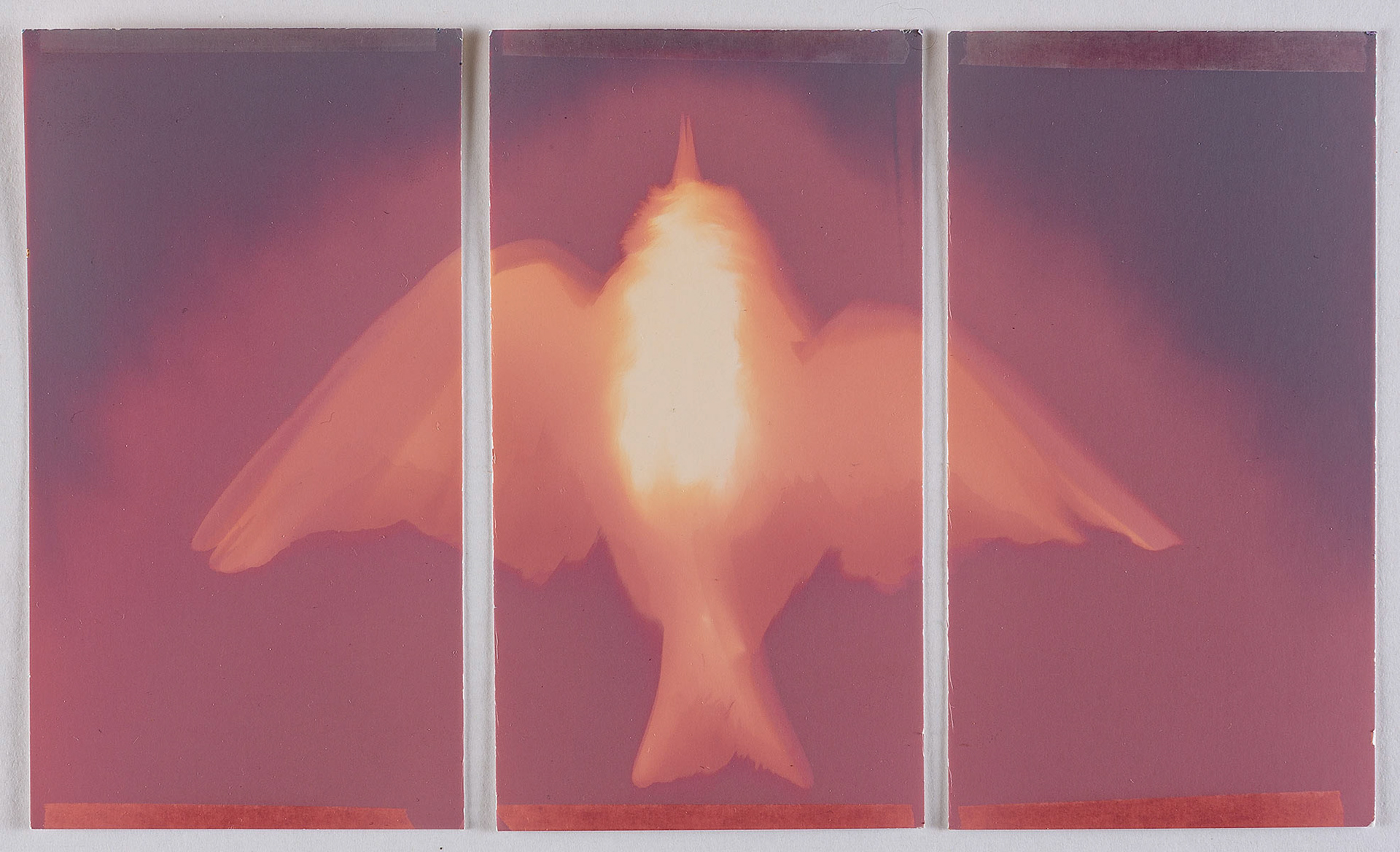




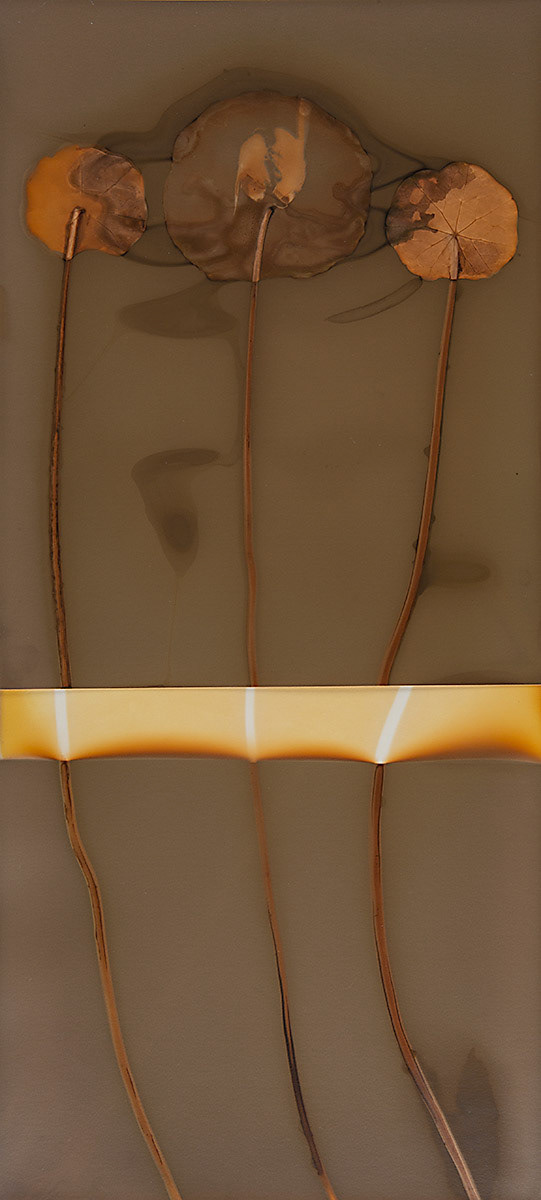

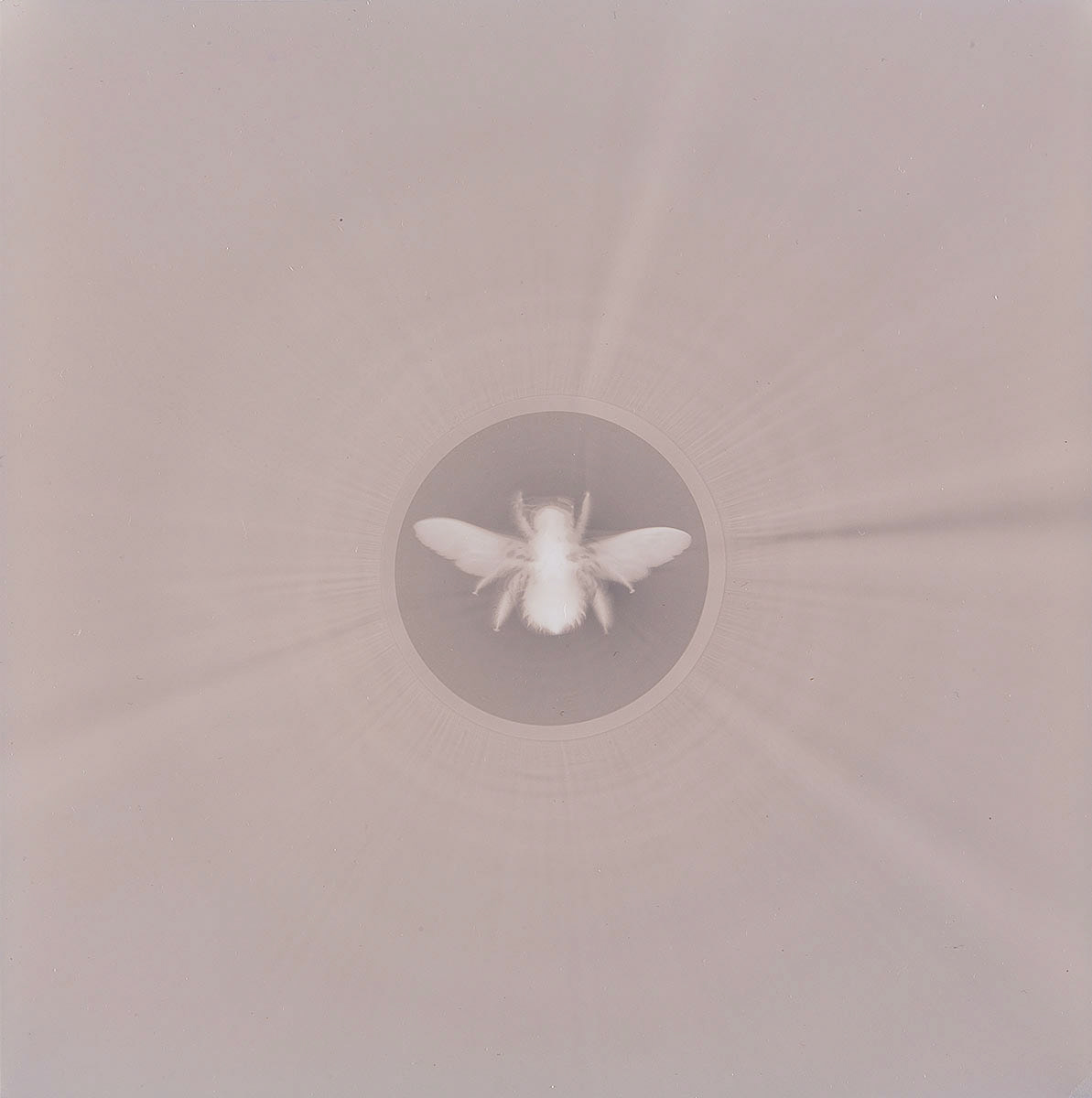



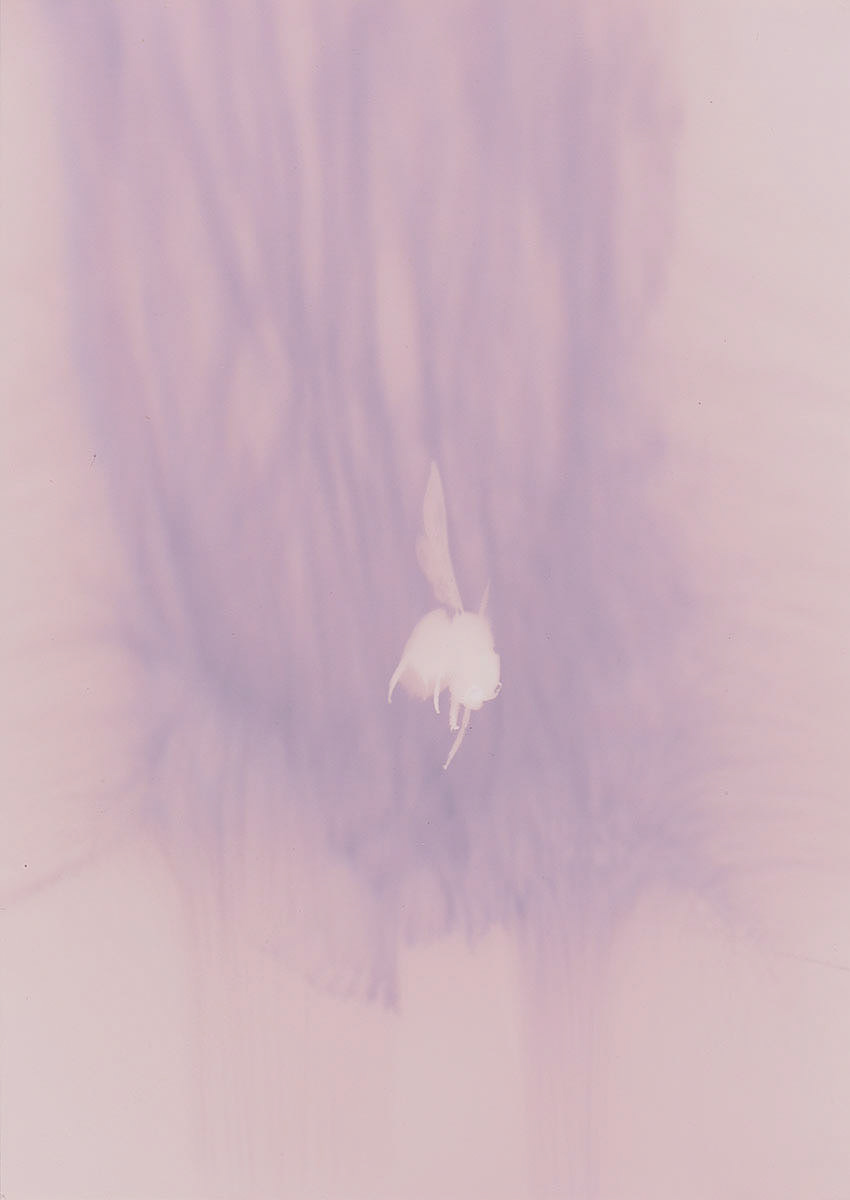


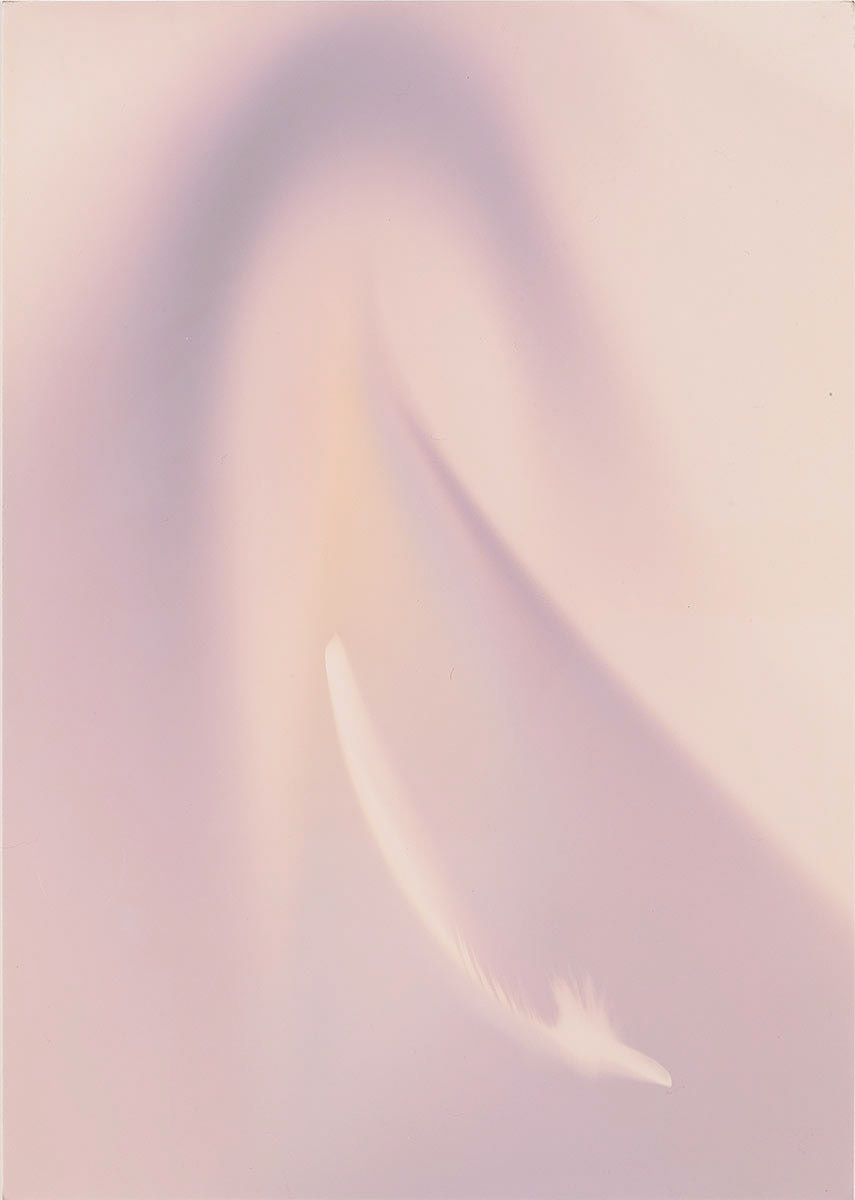
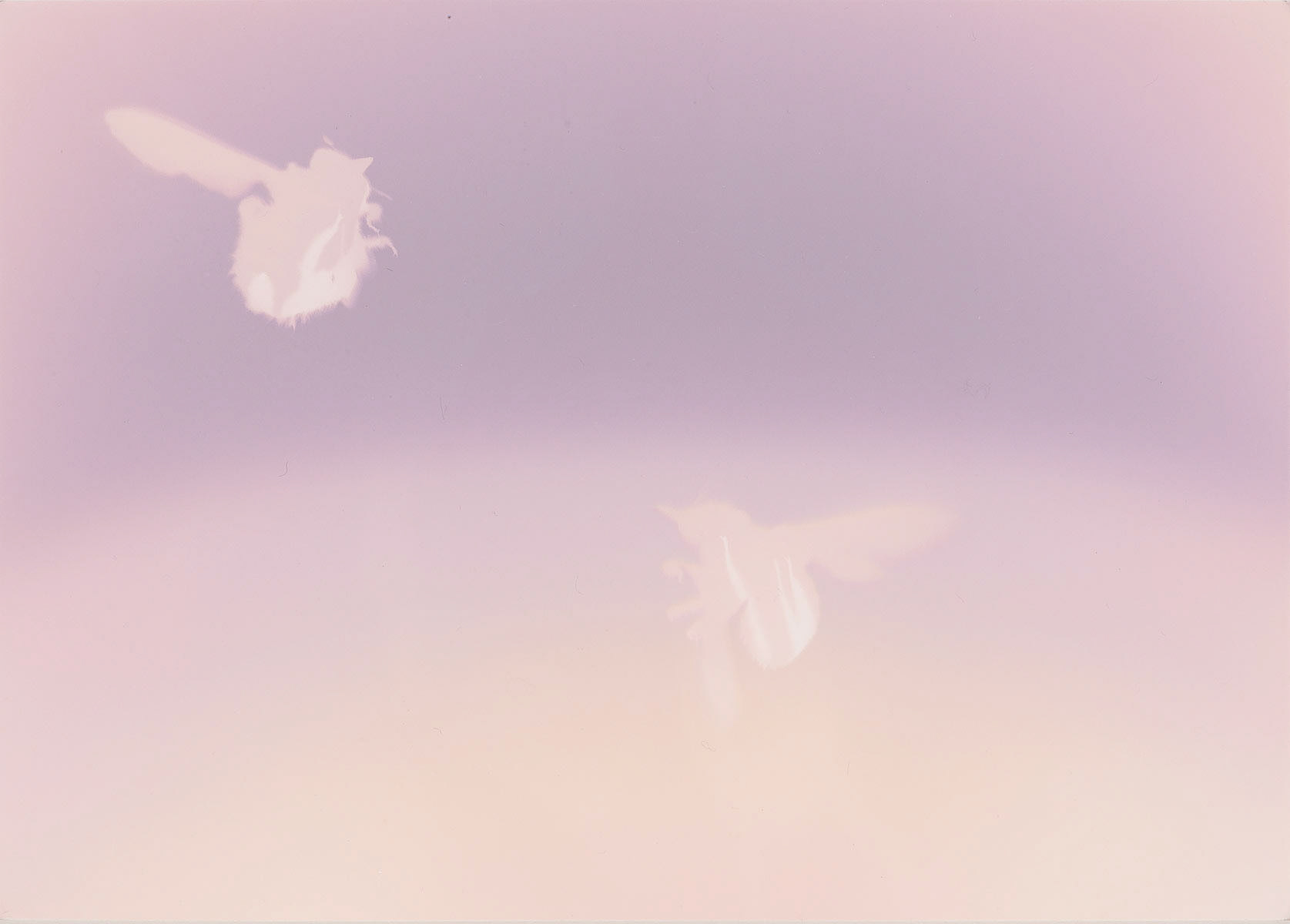
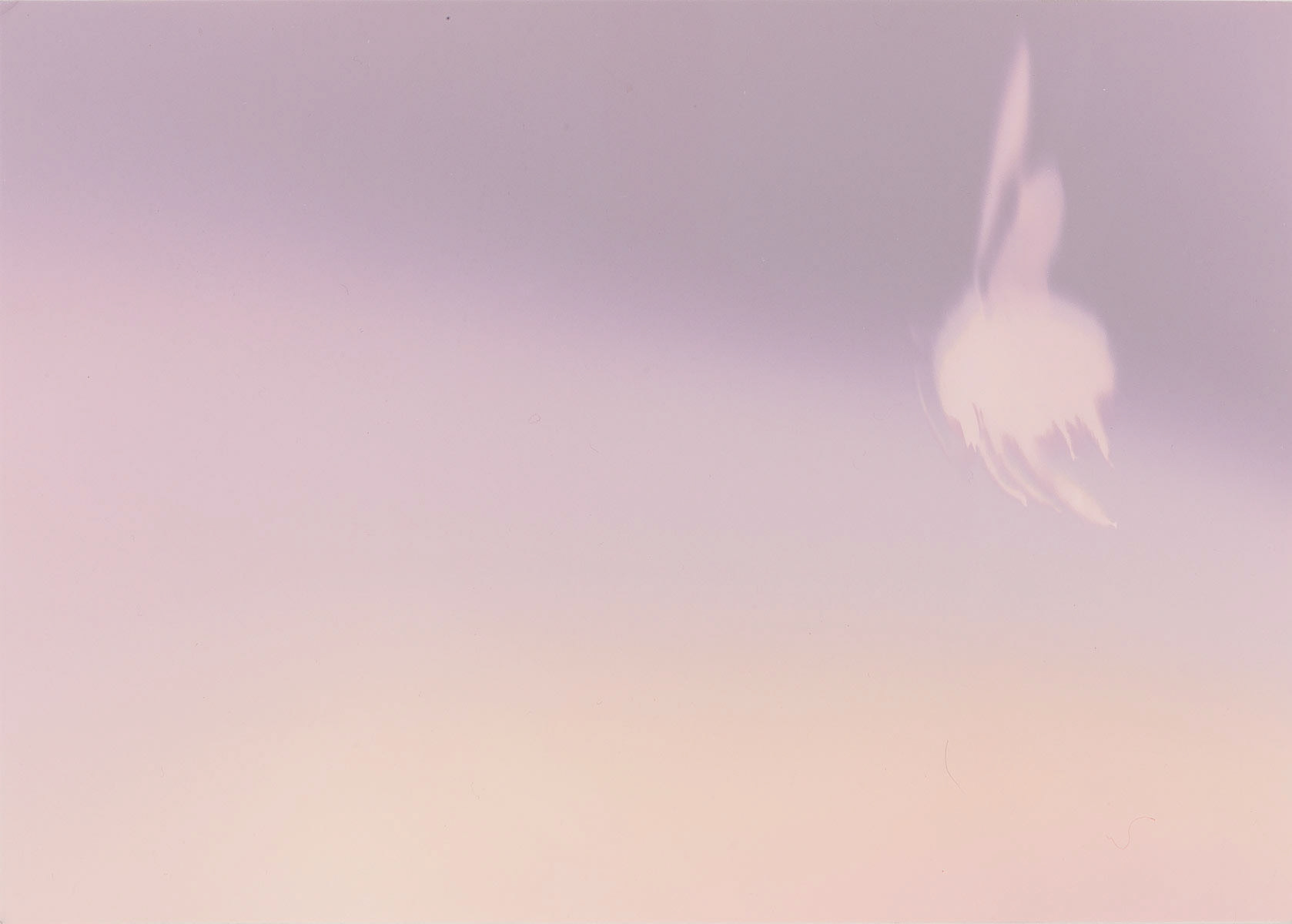

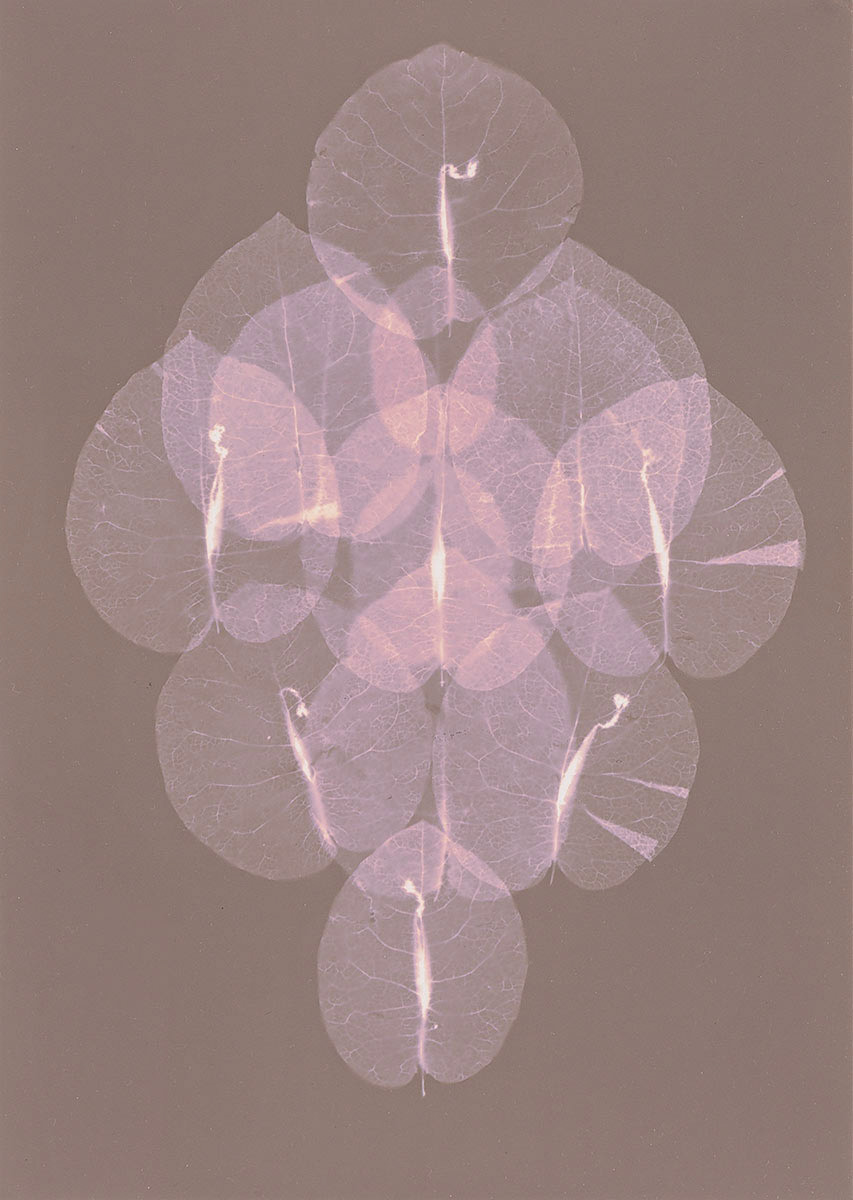
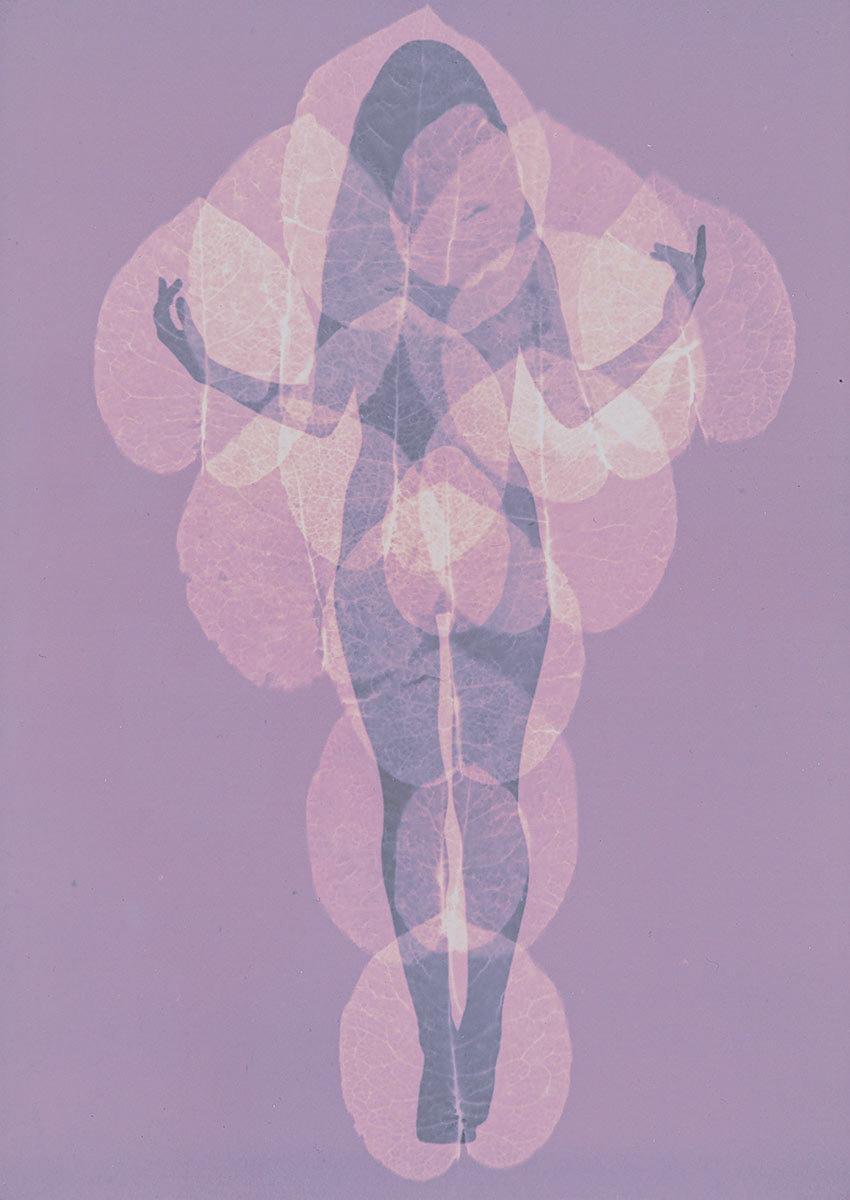
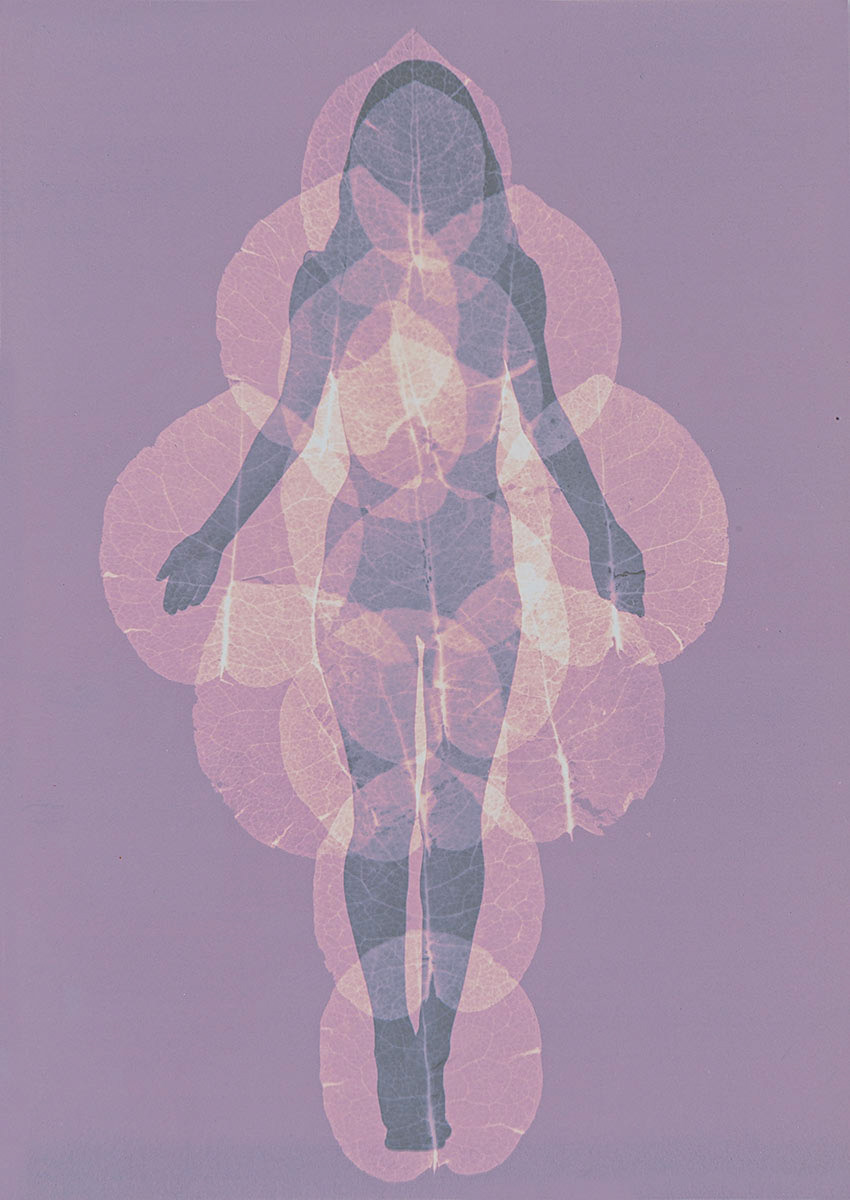

The genesis of this project was conceived in response to conflicting declarations, one asserting bees as the most crucial species and the other acknowledging the perilous status of many of the same species on the endangered list. This project stems from the recognition that we all share interconnected lives, profoundly influencing one another. I would argue that humans hold the title of the most important species, because of our excessive resource consumption and environmental degradation.
The overarching concept of the Anthropocene heavily influenced this project, highlighting the realization that our actions wield such immense power that we are effectively shaping our own epoch in geological history. This project took shape during the pandemic lockdown, a period when reports emerged of wildlife returning to habitats from which they had vanished for decades or more. This remarkable resilience of nature serves as a poignant reminder that our choices can still yield positive outcomes. It underscores the significance of small decisions in effecting meaningful change. Personally, I've used this work as a form of introspection, scrutinizing areas where I've fallen short, particularly in terms of my plastic consumption—a pervasive issue, as plastic litters our oceans and infiltrates natural landscapes, marking our collective contribution.
All the works in this collection are rooted in analog photography. I employ a process that tricks black and white darkroom paper into thinking it's color. The prints are crafted using gelatin silver paper, exposed to sunlight for over an hour—a process often referred to as Lumen printing. I take this technique further by archivally fixing the image and occasionally toning it with gold or selenium. Each piece is unique, crafted from vintage black and white paper that, if used traditionally with developer, would result in a fogged, low-contrast black and grey image. In essence, I'm reclaiming this paper, subjecting it to intense light to alter its nano-silver structure. The act of seeing plays a pivotal role in this project, serving as both a metaphorical reimagining of our landscape and a physical transformation of the way light interacts with and reflects from the paper, creating structural color and light-wave interference.